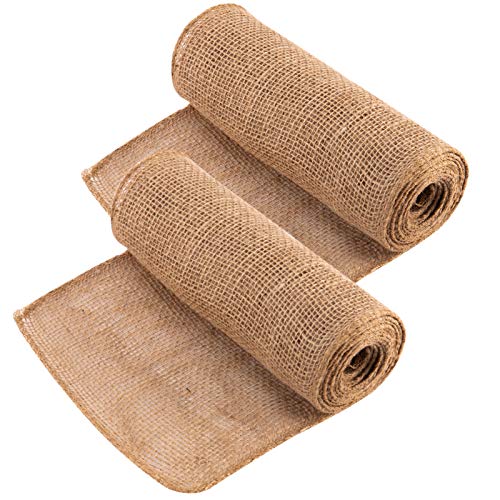- April 24, 2025
- Posted by: wellcoindustries
- Categories: Burlap, Erosion Control
Introduction
Protecting your precious plants from harsh weather conditions, pests, and extreme temperatures is a constant challenge for gardeners. Floating plant covers offer an effective solution, creating a protective microclimate while allowing light, air, and moisture to reach your plants. While commercial options abound, many gardeners seek sustainable, cost-effective alternatives like burlap. This natural material has been used in gardening for centuries, but can burlap be used for floating plant covers specifically? This comprehensive guide explores this question, providing practical advice for implementing burlap solutions in your garden.

Understanding Burlap as a Garden Material
Burlap, also known as hessian or jute fabric, is made from the jute plant’s skin or outer bark. This natural material boasts several characteristics that make it appealing for garden applications. It’s biodegradable, breathable, durable, and provides moderate insulation. According to the Sustainable Agriculture Research and Education program, natural materials like burlap can reduce garden waste by up to 30% compared to synthetic alternatives.
The loose weave of burlap allows for excellent air circulation while still providing protection. Its natural brown color also absorbs heat during the day and releases it slowly at night, creating a moderating effect on temperature fluctuations that can benefit sensitive plants.
The Floating Cover Concept
Floating covers, traditionally made from materials like row cover fabric or plastic, “float” directly over plants without structural support. They create a protective barrier that:
- Shields plants from harsh winds and weather
- Prevents pest access
- Extends growing seasons by trapping heat
- Protects from light frost
The ideal floating cover is lightweight enough to rest on plants without damaging them, while providing sufficient protection from external threats.
Can Burlap Function as a Floating Cover?
Yes, burlap can indeed be used as a floating plant cover, though with some important considerations. Unlike commercial row covers designed specifically for floating applications, burlap requires some adaptation to function effectively.
Burlap works best as a floating cover for:
- Mature, sturdy plants that can support its weight
- Cold weather protection rather than pest control
- Temporary, seasonal applications rather than long-term coverage
Master Gardener Sarah Johnson notes, “Burlap provides excellent frost protection while allowing better air circulation than plastic alternatives, making it ideal for cold-sensitive perennials during transitional seasons.”
Step-by-Step Guide to Creating Burlap Floating Covers
Materials Needed
- Untreated, natural burlap fabric (avoid dyed or chemically treated varieties)
- Garden scissors or shears
- Weights (rocks, bricks, or garden pins)
- Twine or garden clips (optional)
- Spray bottle with water (optional)
Preparation and Installation
- Measure your garden area and cut burlap pieces approximately 20% larger to allow for draping.
- Pre-wash your burlap to remove any manufacturing chemicals and to pre-shrink the material.
- Lightly dampen the burlap before installation for added weight and improved insulation (optional).
- Gently lay the burlap directly over plants, ensuring it’s loose enough to allow for plant movement and growth.
- Secure the edges with weights or pins to prevent wind from displacing the cover.
For larger areas, consider using multiple pieces with slight overlaps rather than one heavy sheet that might damage plants.
Pros and Cons of Burlap as Floating Covers
Advantages
- Environmentally friendly: 100% biodegradable and compostable
- Cost-effective: Often 40-60% cheaper than commercial alternatives
- Breathable: Reduces risk of fungal diseases from trapped moisture
- Versatile: Can be cut, shaped, and customized easily
- Insulating properties: Provides moderate frost protection down to about 28°F (-2°C)
Limitations
- Weight: Heavier than commercial row covers, especially when wet
- Durability: Degrades faster than synthetic materials (typically lasts 1-2 seasons)
- Pest protection: The loose weave may allow smaller insects to penetrate
- Light transmission: Blocks more sunlight than specialized garden fabrics
Enhancing Burlap Performance for Floating Applications
To maximize burlap’s effectiveness as a floating cover:
- Use lighter-weight burlap (4-6 oz) for floating applications rather than heavy varieties
- Create a frame system to support the burlap slightly above delicate plants
- Layer with plastic during extreme cold for enhanced protection
- Remove during heavy precipitation to prevent waterlogging and plant damage
- Store properly when not in use to extend longevity
According to a 2021 study in the Journal of Agricultural Engineering, natural fiber covers like burlap can reduce frost damage by up to 60% when properly implemented.
Conclusion
Burlap can effectively serve as a floating plant cover for specific gardening scenarios, particularly for cold protection of established plants. While it may not replace specialized row covers for all applications, its environmental benefits, cost-effectiveness, and natural properties make it a valuable addition to any gardener’s toolkit.
For best results, consider burlap as part of a seasonal protection strategy, using it during transitional weather and for frost-sensitive plants. By understanding its limitations and implementing the techniques outlined in this guide, you can successfully incorporate this sustainable material into your garden protection plan.
Have you tried using burlap in your garden? Share your experiences or questions in the comments below! For more sustainable gardening tips, subscribe to our newsletter and join our growing community of eco-conscious gardeners.
